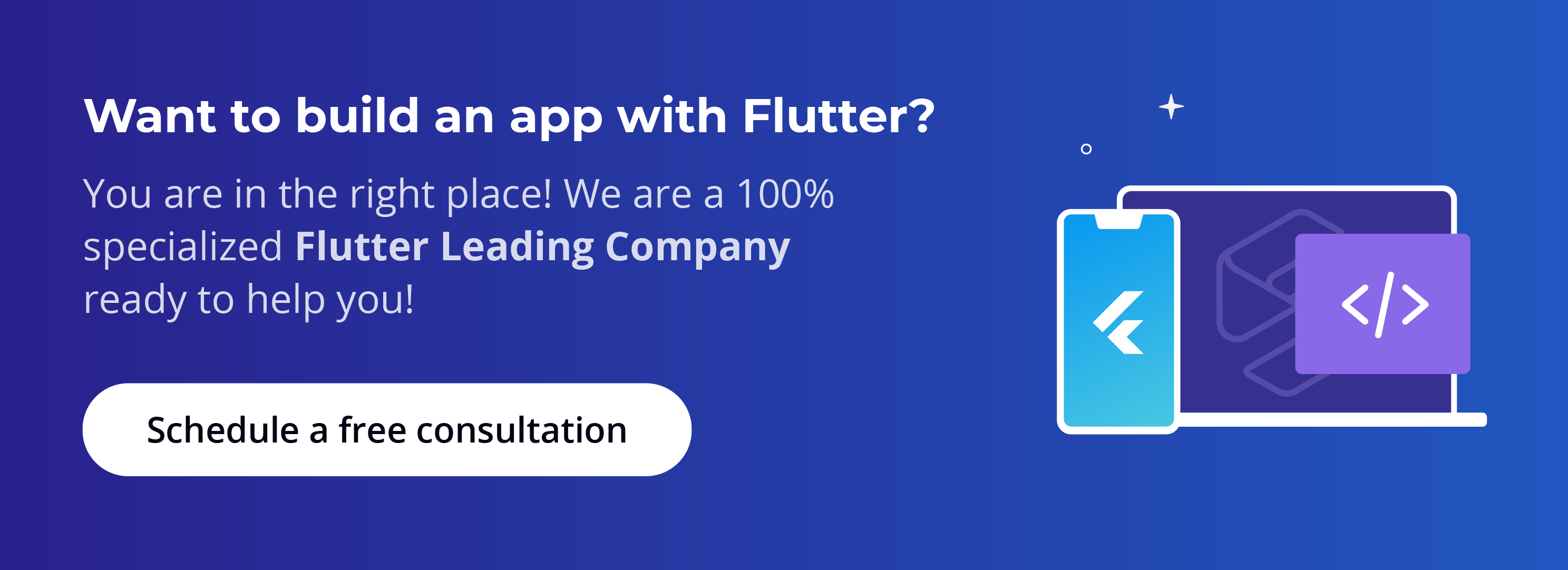Cross-platform apps help your business become more accessible to users without putting you through the hassle of designing and maintaining a website plus Android and iOS apps separately. These mobile apps present a coherent, responsive (capable of adapting to the screen size) interface which can be used to access your platform anywhere, through any device with a stable internet connection.
If you’re exploring the possibility of building a cross-platform app for your business, you might have come across Flutter. Flutter is a cutting-edge mobile app development tool that helps users build fully functional cross-platform apps. But what exactly is Flutter, and why is it so popular?

Initially developed by Google, Flutter is an open-source software development environment/framework used for UI development. Flutter allows developers to write a single, natively compiled UI application that is supported across a wide variety of platforms like Android, iOS, Linux, macOS, Windows, Google Fuchsia, and the web.
What makes cross-platform coding platforms like Flutter so useful is their ability to function using a single codebase. This means developers only write their code once in Flutter using Dart (UI coding language). This code is then natively compiled according to the platform/OS it is being run on. Flutter streamlines the app development process by breaking down the UI into fundamental elements called Widgets.
Widgets represent basic UI elements - for instance, a structural element (button or toolbar), a stylistic element (a font or color scheme), or a layout aspect (like padding) - that can be grouped with other elements to build a complex user screen. Flutter’s ‘packet-based’ development scheme allows developers to define integral UI elements and then use them several times throughout the entire application. This helps streamline the development process and make it more cost and time-efficient, thus making it a boon in resource-intensive environments. To understand what Flutter exactly is and what makes it so useful, it is important to understand cross-platform app development first.
What are cross-platform apps?
Cross-platform apps are user applications that are compatible with multiple operating systems. This gives them the ability to run across a wide variety of devices like laptops, desktops, mobiles, and other hand-held devices (both android and iOS-based). Moreover, these apps are usually coded using a single language (for instance, Dart if you’re using Flutter) and hence can be developed quicker than native apps, i.e., apps that are built for a specialized environment. A shorter development time and increased user accessibility are the most imminent benefits of cross-platform apps.
However, they offer several other features that make them an excellent choice for modern businesses. Being runtime agnostic, cross-platform apps can be updated directly over the internet. This helps your customers avoid the tedious process of regularly downloading update packages to get access to your app’s latest features.
That said, cross-platform apps come with their own challenges. For instance, Android apps come with a specific infinite scroll/ scroll end where android ‘splash’ sounds are played when a user hits the end of the screen. iOS screens, on the other hand, come with an end-scroll bounce that is native to iOS devices. It is difficult to replicate these features across different platforms. This is where Flutter makes a difference.

What are the advantages of Flutter?
Flutter is designed to overcome several problems that plague cross-platform apps. For starters, Flutter follows platform-specific conventions down to the t. For example, all applications developed on Flutter give you the ‘splash’ scroll-end effect on Android platforms, and the scroll bounces on iOS by default, without having to write a single extra line of code. Most platform-native conventions come preloaded in the Flutter library, making Flutter apps feel native to every environment they are run in.
Other unique features that Flutter offers are:
Your developers will need to keep updating your platform as the number of users on it increases. A growing consumer base might also warrant the inclusion of new updates that allow them to do more things on your application. This makes it very important for your cross-platform apps to be scalable. Flutter uses Google Firebase on the backend, which makes it extremely scalable. It offers several scalability-centered features like real-time database sync and auto-optimization of platform-wide updates.
- Complete User Control
Flutter’s widgets allow you to control and customize every pixel on your screen. This allows developers to move beyond pre-defined UI panels and customize the application down to each individual button and text field. The ‘Switch adaptive’ command further allows you to customize each widget for different platforms.
One of the most excruciating parts of working on cross-platform apps is waiting for your code to compile. Most cross-platform development environments come with a high compilation time, which makes it almost impossible for managers to supervise updates in real-time. Flutter’s widget-tree structure enables hot reload, i.e., an instant compilation of all code changes. This saves developers a lot of time and frustration.

Develop the best cross-platform apps with Somnio
Somnio is a company dedicated to building cutting-edge platform apps using Flutter. Flutter is a revolutionary development framework created and supported by one of the world’s biggest tech companies - Google. We handle every aspect of the Flutter app development process, from UI/UX design down to deployment and maintenance. Our extensive service experience and Flutter’s revolutionary capabilities are a combination that can help you develop the perfect cross-platform app for your business.






.png)
%20(1).png)